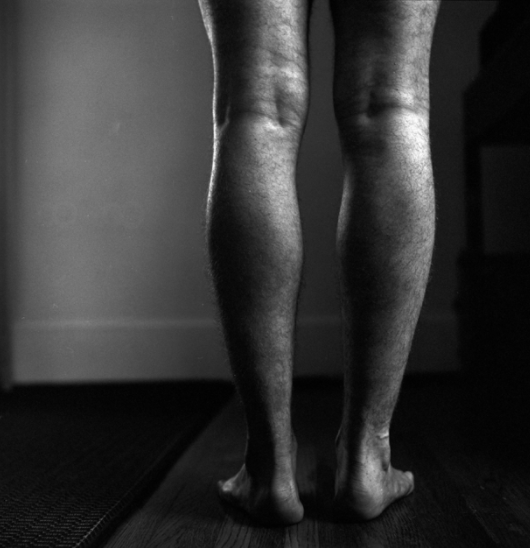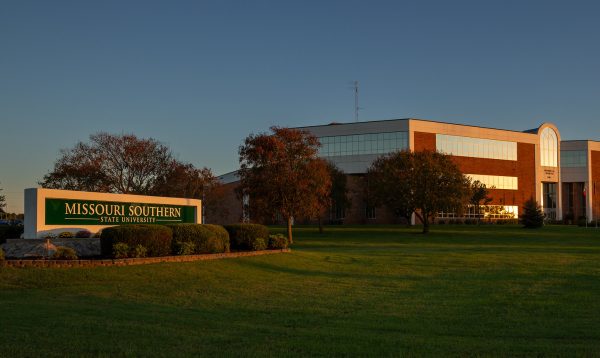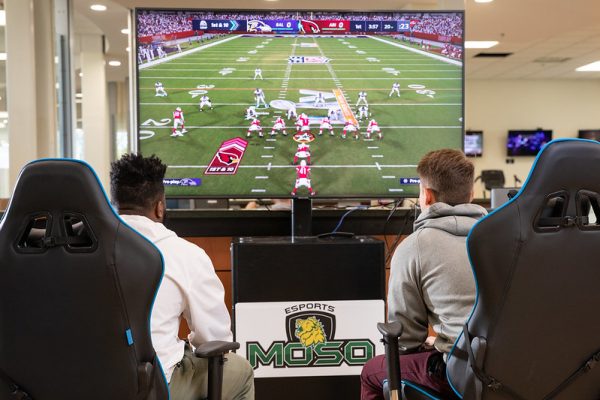Eriksen uses art as career

Piece titled “Ink Stained”
Some consider the ideal life one where they can pursue art. Many who follow this path have dreamt of it since they were young. Others were introduced to the notion later in life.
Whatever the case, this dream can present challenges and be met with tentative support from others.
Ashley Eriksen discovered photography and printmaking as a Missouri Southern student. It plays a role in her career, as the web and new media coordinator for University Relations and Marketing.
It’s also allowed her to exhibit her work in the PhotoSpiva competition. Two pieces are among this year’s selected images, set for display later this spring.
About Eriksen
Eriksen moved to the area in 2002 because of her father’s Air Force job. She has primarily lived in the midwest.
Her passion for art began as she sat in Dave Noblett’s basic photography class.
“I never thought that art was actually something that you could pursue,” Eriksen said. “I have never known a life without art.
“My dad had the opportunity to go to a photography school in Iowa when he was younger, and ended up joining the Military instead. So, ever since I was little, I remember him taking photographs and me taking photographs and…using disposable cameras, using his Nikon FG20, just creating imagery, so I feel like it’s something that’s just always been in my life.”
Eriksen said she met “some fantastic instructors” including Noblett, who guided her artistic direction.
“I had never met anyone that was so passionate about what they had done, at least up until that point,” she said.
Eriksen pursued a bachelor of fine arts degree with an emphasis in printmaking and graphic design.
“I was really drawn to printmaking because it was analog,” she said. “It was kind of this archaic, antiquated process, and in a society where everything is so throw-away, [so] one-time use, it was nice to know what the original processes of mark making were when it came to mass-production.”
Specifically, she focused on intaglio which is the process of how money is made.
It involves embedding a design into a metal plate and letting acid eat away at the metal in certain increments, known as etching. Once the plate is etched, it is cleaned and inked to print.
While she was encouraged to switch to a business degree, Eriksen persisted and persevered, adding on a graphic design degree to include an additional sellable skill to use after graduation.
As a student, Eriksen traveled abroad twice. Her interest in photography led her to participate in the Summer in Sweden program the art department offers.
In the month long trip, students travel to the Mullsjö Folkhögskola located in Mullsjö, Sweden and study black and white photography from photographer Örjan Henriksson.
“I started learning from this man, and he just fascinated me,” Eriksen said. “[I] didn’t know who he was, didn’t know what his lineage was. All I knew was that I was going to learn studio photography from this guy.
“I was completely captivated by everything single thing that he said, and his photography was breathtaking, and it really matched what I was trying to do.”
Eriksen said she learned to stretch her photography past common subjects.
“You grow with your photography, and I was at that point where I was deciding which direction I wanted to go and I met him,” Eriksen said. “I was just captivated.”
Along with photography, she took art history classes in Sweden.
“You take a lot of art history classes with an art degree, [you] learn how to talk about art,” she said. “Spending five weeks immersed in another culture, going to their biggest [galleries having] people who can talk about art with you, you’ll learn.”
Eriksen said she learned how to not only communicate about art, she learned to look at things beyond the surface.
“You actually analyze it and you learn how to communicate with other people how stuff makes you feel,” she said.
After she participated in the Summer in Sweden program, Henriksson flew to the United States and offered her an internship. It allowed her to not only receive college credit, but to work on her black and white fine art portfolio.
“[He’s] not the guy that gives you the answers, not the guy that even gives you 70 percent of the answers,” she said, adding Henriksson’s guidance and the internship gave her the opportunity to discover a new direction with her photography. It also taught her to be independent.
“There’s something to be said about traveling completely alone to a country where nothing is written in your native language,” she said. “I learned how to trust myself and trust my intuition and judgment. You learn really fast how to rely on yourself.”
As a student, Eriksen’s parents encouraged her as she pursued her artistic path. They did warn her it would be difficult at times.
“Frankly [graduating] was terrifying, because you know once you walk across that stage and you’re excited cause you’re like ‘I have these two piece of paper’ and then you’re like ‘okay, now what?” she said.
A chance meeting with Rod Surber, who worked in Southern’s public relations department changed her life.
Eriksen told Surber she recognized him, and inquired if Southern needed a graphic designer, or if he knew of someone who did.
Surber asked for Eriksen’s card. A few days later he called her to set up an interview.
Eventually she was offered an internship as a graphic designer in information technology. A year later, she became a full-time graphic designer when the position merged with University Relations.
This position gave Eriksen new opportunities. When the campus videographer needed help, she was tasked to help him. She eventually moved from graphic designer to multimedia specialist.
She then began building commercials, and soon gained interest in social media. Her position as social media specialist garnered the opportunity to take over the University’s Twitter account.
Over time, she eventually moved from social media specialist to social media coordinator.
In August of 2018, she added the responsibilities of the webmaster, changing her title to new media coordinator. This job entails managing Southern’s social media accounts and websites.
While her job mainly entails managing online personas, Eriksen is able to implement skills she learned from the art department, including elements of design.
It also helped her learn how to handle constructive criticism which has benefited her role in social media and web.
Outside of work, Eriksen continues to pursue fine arts photography using what she learned from Henriksson.
“Working next to [Henriksson] gave me the space and the time to figure out who I was, what I wanted to shoot and why I wanted to shoot to, and what that looked like,” she said. “I’ve continued in growing in how I capture things.”
Her works document the quiet moments in life.
“I think in an Instagram, throw-away, one time use culture, where everyone is screaming to be heard, everyone’s a photographer, and everyone has a camera, everyone has a camera on their phone, people can document everything,” she said. “They document things on their phone and they never look at it again. My whole point in documenting these quiet moments to just silence that cacophony of just madness, of just noise.
“It’s not always the person that is screaming that gets the most attention. In a room where everyone is screaming and you’re the one person whispering, people want to know why you’re whispering.”
In featuring everyday moments, Eriksen actively practices antiquated forms of photography, such as collodion photography.
Learning from Anton Orlov, collodion photography is the style similar to Civil War photography.
“You’re essentially making your own negative,” Eriksen said. “You’re creating an impregnable surface that you can put in a silver nitrate bath to make photo sensitive.
“The whole process takes about eight minutes, from pouring your collodion to the time your image has appeared on your glass [surface].
“It’s a very interesting, and it’s an old, old antiquated process, but it creates the most striking images.”
Exhibiting in PhotoSpiva
In the last few years, Eriksen has submitted works to be considered for PhotoSpiva, the longest-running photography competition in the United States.
In 2018, two of her pieces tied for third place. Her piece “Olivia Victoria” won the people’s choice award.
This year, out of the 88 accepted works, Eriksen will have two images on display. More than 600 photos were considered for the show.
“It’s an honor to be part of PhotoSpiva. Even though it’s in town, that doesn’t matter,” Eriksen said. “You have the opportunity to stand beside people who are of incredible caliber. I think that just makes you want to do more, do better, be better, just continue to chase that.”
Your donation will support the student journalists of Missouri Southern State University. Your contribution will allow us to purchase equipment and cover our annual website hosting costs.



















